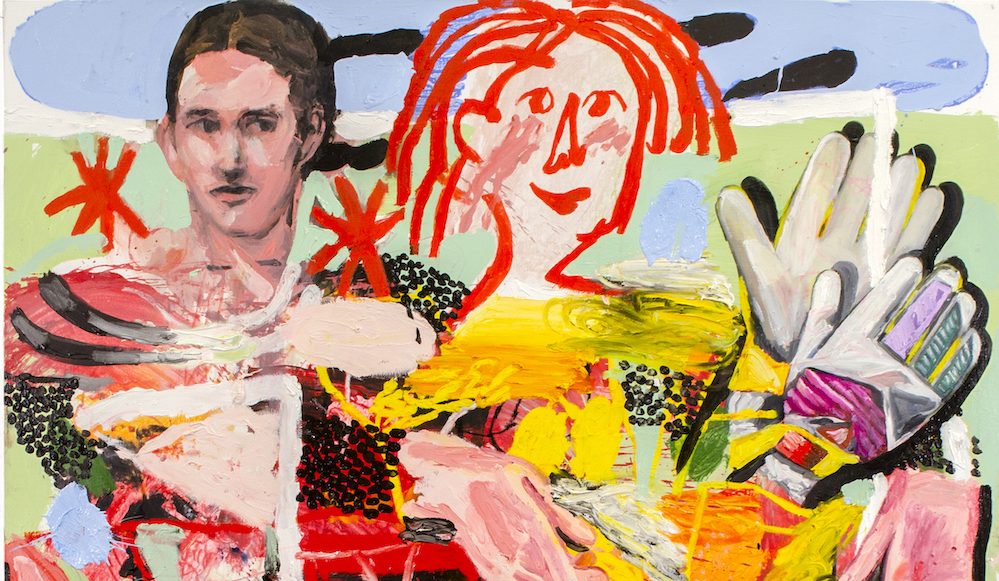
6 September - 14 October
Juego is the Spanish word for play. To English-speaking ears, the word suggests something more mysterious than its English counterpart; it sounds somehow seductive and alluring. There’s a buoyancy to the word – not just what it means, but also what it suggests – and there is a similar idea presented within these works.
“This is not a linear story as we are used to seeing in books or films,” García writes via email. “The mind works with many simultaneous ideas and sensations,” and these works have that pendulous effect. Somewhat dizzying, enchanting… ideas that seem ever-out-of-grasp. And he’s right, there isn’t a clear narrative at play that we might come to expect from other figurative artists. The titular juego also suggests something exuberant or mischievous. Just as how García treats the paintings as palimpsests, where concepts are paved over, reworked, rewritten, or obscured. The ghosts and lines of former ideas are being erased and reapproached. So the ‘movement’ inherent in the title becomes temporal too, where a painting records an artist’s process and thoughts in time and space.
As viewers, we spot the tenets or building blocks that constitute a greater story, but this functions almost like Argentine author Julio Cortazar’s famous novel Hopscotch, which can be read as a linear text or piecemeal, at random. “Two dogs hunting swallows, a night among mates, a hug… but often they are just excuses to develop another game within the painting, playing for the pleasure of playing.”
One is also reminded of Rauschenberg’s erased de Kooning drawing, where the conceptual framework surrounding the image becomes rather more important than the image itself. This is art about process more than subject matter – at least, to a degree – and one sees as much Twombly in García’s explosive, paroxysmal mark-making, as we do, say, another artist whose lynchpin is representation. And representation can open itself to problems and restrictions: an artist can become hindered by the attempt to record accuracy. So this freeform play allows García to move effortlessly between the two spheres of representation and pure abstraction.
“There is a constant game in my painting which is constant references to the painting itself. Abstraction, figuration, academy, raw languages, different techniques, children’s stuff, poetics, humour… All the things that happen to me in the course of making a work appear in one way or another in the work, so that pop languages end up sharing spaces with more primitive stains, elements that have a profound importance for me, and arbitrary elements.”
In the end, all this feeling of play produces new images through which we, as viewers, can also engage in this play. It becomes a game of image deciphering. He states: “Are they hugging? Are they fighting? Is that Velazquez’s? Who is that girl? Do I know her? I had Nike’s like that too…. whatever.”
As we create these linkages between paintings, we begin to understand the vernacular the artist works with, where symbols and referents are also removed from concrete meanings, becoming both reduced into ideological triggers or symbolic codes. Or perhaps all this is reaching too far away from what the young artist intends, and we should instead appreciate his confident mark-making, his ability to transcend the weight of figurative painting and representation, and simply enjoy his process, play with his material, the buoyancy and fun that exists in these works and the playfulness that subverts our expectations – whatever they may be.
51 Little Britain, London, UK, EC1A 7BH
Opening Reception: Thursday, 7th September, 6-8 pm
Enquiries: phoebe@beerslondon.com